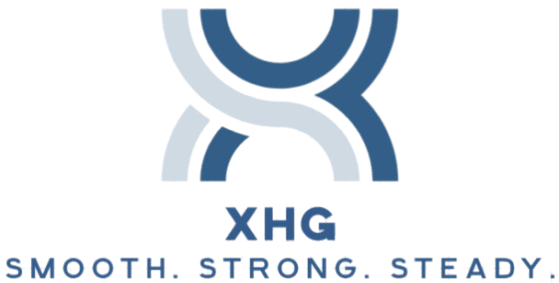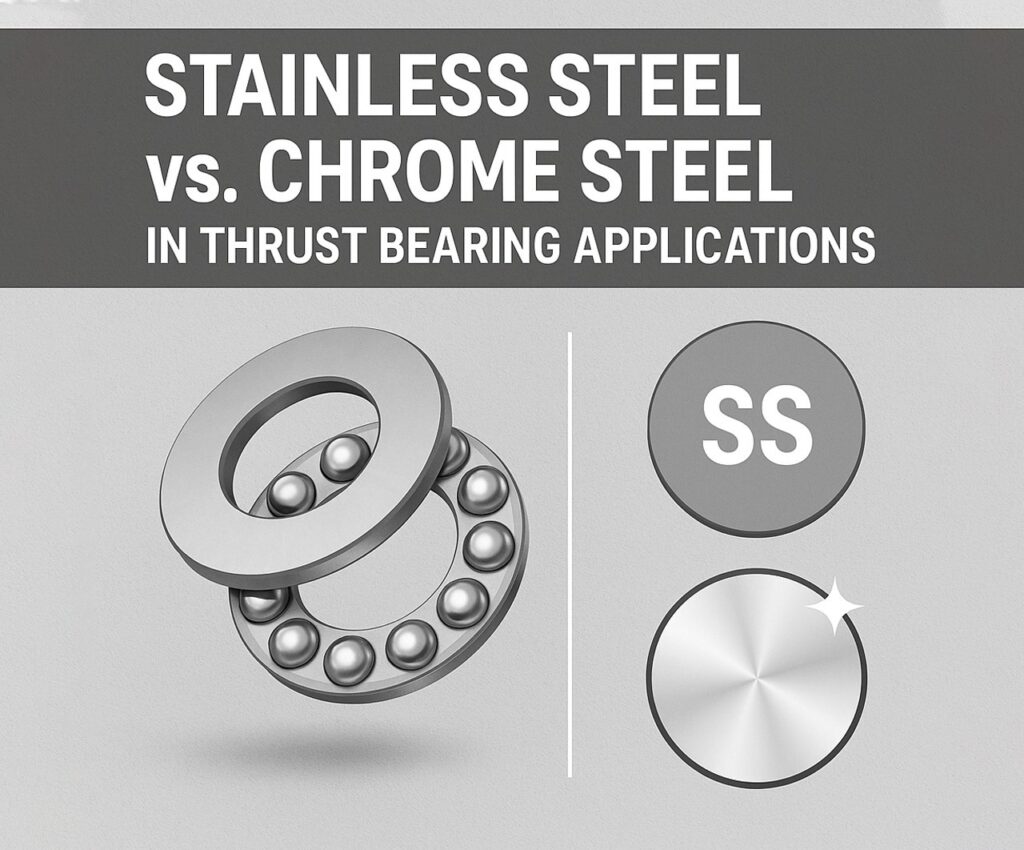In the world of precision motion control, selecting the right materials is just as important as the bearing design itself. Whether you’re choosing a thrust bearing assembly for a marine environment, specifying a needle thrust bearing in a high-load industrial system, or optimizing a needle roller thrust bearing for speed and durability, the debate between stainless steel and chrome steel is always central. Each material has its own strengths, weaknesses, and ideal use cases, and understanding the differences is key to getting the best performance out of your thrust bearing solution. Know More
Understanding the Basics: Thrust Bearings 101
A bearing thrust is designed to handle axial loads—those forces that act parallel to the shaft. These bearings support rotating parts and keep components aligned, especially in assemblies where directional force is a constant factor.
There are several types of thrust bearings, including:
- Ball thrust bearings
- Cylindrical thrust bearings
- Needle thrust bearings
- Tapered thrust bearings
Among these, the needle roller thrust bearing is popular for its ability to handle high axial loads in compact spaces. It uses long, thin rollers (needles) to minimize height while maximizing load capacity.
Material Showdown: Stainless Steel vs. Chrome Steel
When choosing between stainless steel and chrome steel for your bearing thrust application, you’re really choosing between corrosion resistance and surface hardness.
Chrome Steel (SAE 52100)
- Hardness: Rockwell hardness of 60-67 HRC, excellent wear resistance
- Load Capacity: High load capacity under normal operating conditions
- Corrosion Resistance: Limited, especially in wet or salty environments
- Cost: Generally lower than stainless
This makes chrome steel ideal for controlled environments like electric motors, gearboxes, or automotive transmissions where exposure to moisture and chemicals is minimal.
Stainless Steel (AISI 440C or 304/316)
- Corrosion Resistance: Excellent in water, chemicals, and salt environments
- Durability: Slightly lower hardness but better long-term resistance in corrosive settings
- Magnetic Properties: Varies; 440C is magnetic, while 316 is non-magnetic
- Cost: Higher due to alloy content
In marine, medical, or food-processing applications, stainless needle thrust bearings or needle roller thrust bearings are the go-to choice.
Key Performance Differences
Let’s compare stainless steel and chrome steel in terms of critical performance areas:
1. Wear and Fatigue Life
- Chrome Steel: Superior in dry and clean environments, offers long wear life
- Stainless Steel: Slightly softer, but resists pitting corrosion that can cause fatigue failure
2. Lubrication Sensitivity
- Chrome Steel: Requires consistent lubrication to avoid rust and degradation
- Stainless Steel: More forgiving, especially in marginal lubrication scenarios
3. Operating Temperature
- Both materials perform well, but stainless options resist oxidation better at high temps
4. Environmental Resistance
- Stainless clearly wins here, especially in saline or chemical environments
5. Magnetism
- Important in medical and electronic uses; chrome is magnetic, while some stainless variants are not
When to Choose Each Material
Choose Chrome Steel:
- In sealed environments with tight lubrication control
- For high-load, high-speed industrial applications
- Where cost is a major factor
- In automotive systems like differentials and transmissions
Choose Stainless Steel:
- In marine, washdown, or humid environments
- In food or pharmaceutical equipment
- In medical devices and instruments
- When failure due to corrosion must be avoided at all costs
Creative Use Cases in Industry
The versatility of the bearing thrust, needle thrust bearing, and needle roller thrust bearing means they show up in some innovative places:
1. Marine Winch Systems
A stainless needle thrust bearing ensures continuous operation under high loads and constant saltwater exposure.
2. Medical Centrifuges
Non-magnetic stainless needle roller thrust bearings are used in quiet, smooth-spinning centrifuges for blood processing.
3. Automotive EV Motors
Chrome bearing thrust assemblies handle rapid torque changes and high RPMs efficiently.
4. Solar Tracking Systems
A hybrid approach uses chrome steel for structure and stainless needle thrust bearings for pivot points exposed to the elements.
Maintenance and Lifecycle Considerations
The choice of material affects more than just performance—it also impacts lifecycle management.
- Stainless Steel Bearings may last longer in wet or corrosive settings with less frequent maintenance.
- Chrome Steel Bearings require regular lubrication but offer excellent performance if kept clean and dry.
Pro tip: Always factor in the total cost of ownership. A cheaper chrome bearing might cost more in downtime and replacements over time.
Material Science Innovations
Recent advancements are pushing both materials further:
- Ceramic-Coated Chrome Bearings: Add corrosion resistance while keeping hardness
- Hybrid Stainless Bearings: Combine ceramic rolling elements with stainless races
- Food-Safe Lubricants: Designed to complement stainless needle roller thrust bearing systems
Real-World Case Study: Offshore Wind Turbines
In offshore turbines, thrust bearings endure fluctuating axial forces from blade pitch adjustments. A major turbine manufacturer tested both stainless and chrome needle thrust bearings in prototype nacelles:
- Chrome Steel Bearings wore faster and required more frequent lubrication
- Stainless Bearings maintained integrity under salt spray and moisture, with reduced maintenance needs
Final decision? Full stainless needle roller thrust bearings were adopted for their longevity and reliability.
Final Thoughts: Precision in the Right Material
Whether you opt for stainless steel or chrome steel, matching the right material to your bearing thrust needs is critical for performance and reliability. In harsh environments where rust is a risk, stainless needle thrust bearings can dramatically extend service life. In controlled, high-load systems, chrome needle roller thrust bearings deliver unmatched precision and speed.
In the end, there’s no one-size-fits-all answer. But understanding the trade-offs between hardness and corrosion resistance empowers engineers to build systems that are both high-performing and long-lasting.
From deep-sea to laboratory bench, the humble bearing thrust assembly continues to play a vital role in making things move—and choosing the right material is the first step toward engineering excellence.

